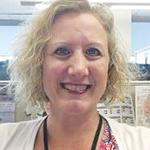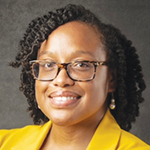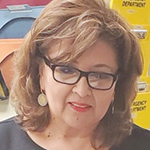By PATRICIA CORRIGAN
When COVID-19 escalated demands on health care providers in early 2020, CHRISTUS Health developed a remote patient monitoring program to aid uninsured or otherwise vulnerable patients discharged to manage the illness at home. Support teams that included community health workers distributed thermometers, oximeters and instructions for how to use a cell phone app and then monitored patients' conditions.
The teams also provided practical and emotional support to the 561 patients enrolled. The program was a success. Now the health system is considering new applications for the remote monitoring program.
What contributed to its success?
"A monitoring program originally used for patients coping with hypertension quickly morphed into one focused on COVID-19 outreach," said Kala Guidry, program manager of health equity data management and analytics at CHRISTUS Health. For 14 days, COVID-19 patients reported their vital signs twice a day to the support team, either through the app or by phone.

Guidry
In addition to teaching patients or family members how to use the app, support team members helped them enroll in insurance programs, coordinated delivery of food and household supplies, found financial aid for everything from medications to mortgages and even located a working refrigerator for one family.
The teams included 15 certified community health workers and case managers, many of whom were responsible for other duties as well. "They all are highly skilled, seasoned individuals, used to multitasking," Guidry said. "They knew the patients, they knew who needed help and they pushed their sleeves up and did what needed to be done — this is a heroic story of everyone coming together."

Talley
Building better connections
Michael Talley, vice president of virtual care and clinical operations at CHRISTUS Health, added, "The team gets a lot of credit for deploying remote patient monitoring based on its utility and innovation, but what made this program so successful was their thoughtful collaboration and outstanding execution. Because of their hard work, we were able to keep our doors open to those most in need."
Guidry noted that the remote monitoring program proved its value. "This was an example of crossing over, to be able to truly see continuation of care between in- and out-patient, a program that paved roads that were not there before," she said. "We'd been meaning to go in that direction for a while, and COVID-19 pushed us more in that direction."

Hilliman
Yollanda Hilliman, who until recently was program director of virtual care and clinical improvement at CHRISTUS Health, explained that in February or March of 2020, the system was presented with an opportunity from a company that wanted to fund a pilot program for remote patient monitoring. "When our managed care leader brought the idea to us, we thought it was perfect as a decompression strategy for our emergency room or inpatient services," she said.
Hilliman, who left CHRISTUS Health in October, said that the same company that originally provided the remote monitoring devices for home care of COVID-19 patients provided additional devices last summer for home monitoring of patients with chronic obstructive pulmonary disease and congestive heart failure.
"We'd like to explore (remote monitoring) further and expand the program to patients with pneumonia and the flu," Hilliman said at the time. "We're also discussing how to incorporate remote monitoring as a solution for long-term care."
Adaptive staff, grateful patients
Staffing was a challenge in structuring the COVID-19 remote patient monitoring pilot. Hilliman met with Guidry's team to brainstorm. "They came up with the idea to use resources already in place — our community health workers, our emergency department navigators and also care management workers at some of our facilities," she said. Initial conversations about launching the program began in May 2020, and "soon everything was in place as relates to physician oversight, creating protocols, determining eligibility criteria and making changes to our electronic medical records system."
In July 2020, CHRISTUS Health launched the program at three of its facilities, eventually putting it in place at 10 sites in Texas and one in central Louisiana. "This program provided CHRISTUS Health care providers added confidence to discharge patients who needed ongoing monitoring," Hilliman said. She paused and laughed, remembering how quickly it all came about. "It was wild," she said, "but it worked, and it was great!"
Hilliman knew that because patients told CHRISTUS so.
Twelve days after enrolling, patients were asked for their feedback. "Resoundingly across the board, we heard how appreciative patients were," Hilliman said. "They told us that with so much unknown, patients knew they had a team they could reach out to, and they knew the team would do everything to help." One patient wrote, "Thank you for staying with me throughout this scary journey. God bless your program."

Perez
Esmeralda "Mela" Perez, director of community health for the CHRISTUS Santa Rosa Health System, led a team that consisted of herself and two community health workers at CHRISTUS Santa Rosa Hospital – Medical Center and CHRISTUS Santa Rosa Hospital – Westover Hills, both in San Antonio. Before COVID-19, community health workers had supported physicians by offering information to patients, Perez said. Their role completely changed as they focused on obtaining information from patients.
"We contacted the physician on call if we learned a patient had a fever or their oxygen levels had dropped," she said. The team also worked to identify issues causing stress, such as the need to connect with a food bank or other resources. "There were so many factors that played into supporting each individual, and sometimes even after the 14 days, we continued to talk with patients."
Reflecting on the experience, Perez said, "COVID-19 gave us the benefit of learning what we could do when it seemed impossible. We found we were able to provide care for patients way beyond the walls of the hospital. This is what we do — spread the healing ministry of Jesus Christ. I believe we came together successfully to do that."